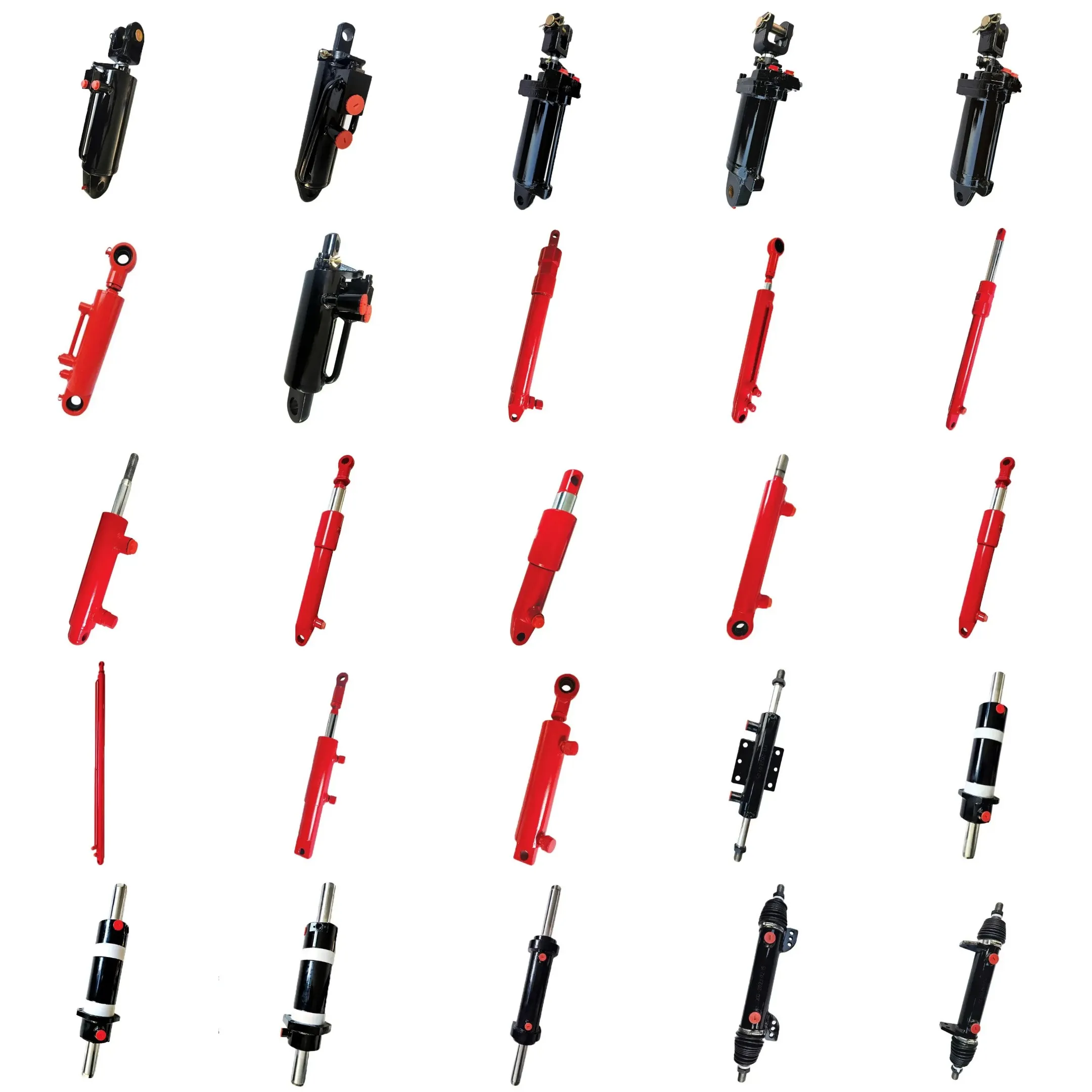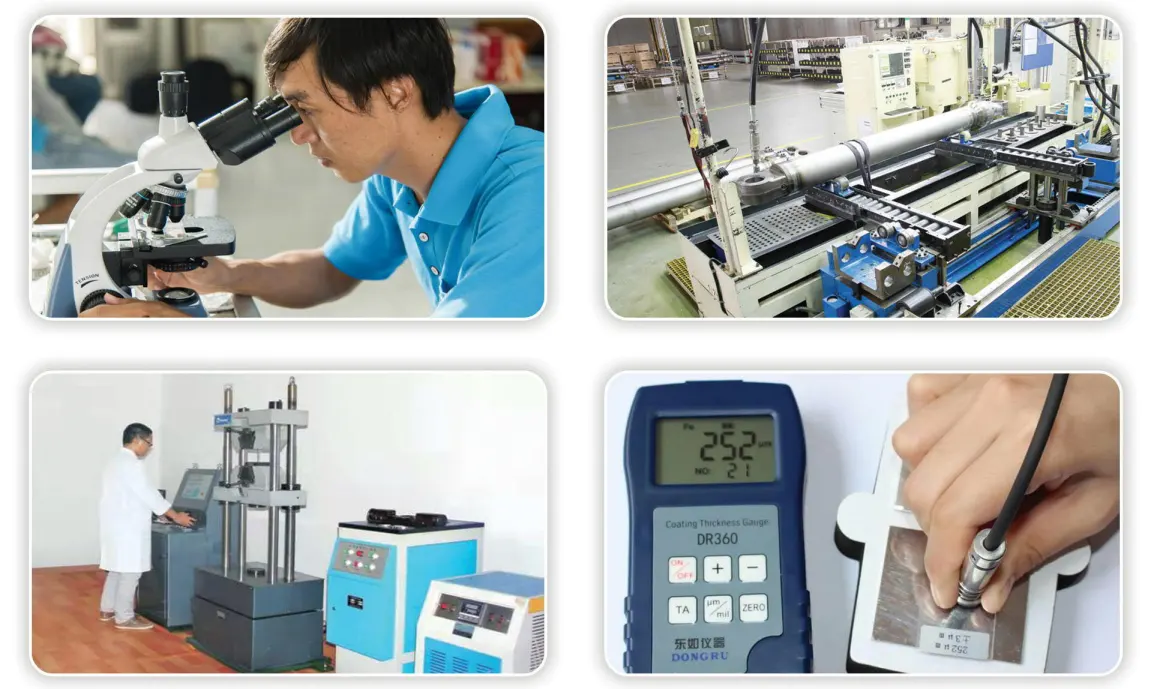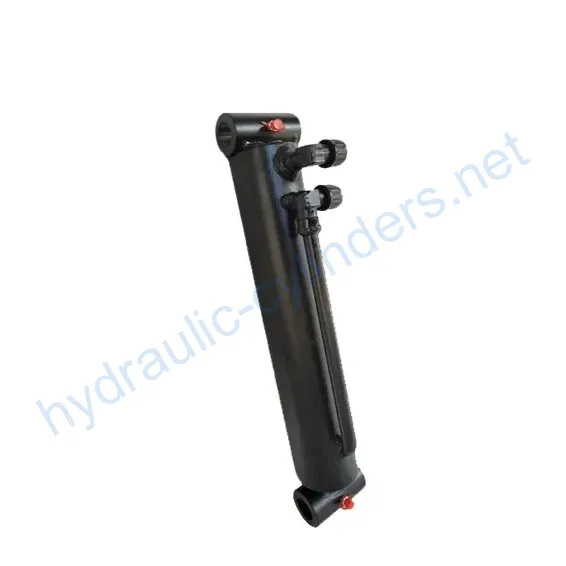Crawler Transport Vehicle Front Bucket Hydraulic Cylinder
Sebagai salah satu produsen, pemasok, dan eksportir silinder hidrolik, Kami menawarkan silinder hidrolik dan banyak produk lainnya.
Silakan hubungi kami untuk informasi lebih lanjut.
Surat:sales@hydraulic-cylinders.net
Produsen pemasok eksportir silinder hidrolik.
Crawler Transport Vehicle Front Bucket Hydraulic Cylinder
Product Definition
The Crawler Transport Vehicle Front Bucket Hydraulic Cylinder is a vital component in heavy machinery, specifically designed for operations such as lifting, dumping, and tilting in construction and mining applications. This hydraulic cylinder utilizes hydraulic pressure to convert fluid energy into linear motion, enabling powerful and precise movement of the front bucket on crawler vehicles. With its robust construction, it ensures durability and reliability under extreme operating conditions, making it essential for efficient material handling and excavation tasks.
Product Specifications
Cylinder Diameter
The cylinder diameter measures 40mm, providing a strong base for hydraulic operations.
Rod Diameter
The rod diameter is 20mm, ensuring necessary strength and stability during operations.
Travel
With a travel length of 164mm, it allows for effective reach and performance.
Installation Distance
The installation distance is set at 368mm, accommodating various installation configurations.
Product Features
- High durability due to premium material construction.
- Efficient hydraulic operation for reliable performance.
- Customizable sizes and specifications to meet specific needs.
- Compatibility with various crawler transport vehicles.
- Easy installation and maintenance processes.
We specialize in producing this hydraulic cylinder, guaranteeing that our products can perfectly substitute existing hydraulic cylinders in the market.
Application Scenarios
Construction Sites
In construction, the hydraulic cylinder plays a crucial role in operating front loaders and excavators. It enables the lifting of heavy loads such as soil, gravel, and debris, which enhances productivity and efficiency. Operators rely on the reliability and strength of this cylinder to ensure smooth operations, especially in rugged terrains.
Mining Operations
In mining, these hydraulic cylinders are essential for maneuvering equipment that digs and transports minerals. They provide the necessary force to operate digging tools and improve cycle times, which is critical in high-demand environments. Proper function of these cylinders directly impacts productivity and safety in mining operations.
Agricultural Equipment
In agriculture, hydraulic cylinders are used in tractors and tillers for various tasks such as lifting plows and harrows. Their ability to provide precise control over heavy implements increases operational efficiency, allowing farmers to cultivate larger areas with less effort.
Waste Management
Hydraulic cylinders are employed in waste collection vehicles, enabling the lifting and dumping of heavy refuse containers. Their robust design ensures they can withstand repetitive use in demanding conditions, contributing to effective waste management practices.
Material Handling
In warehouses and distribution centers, these hydraulic cylinders facilitate the movement of heavy items, enhancing logistics. They help in operating forklifts and pallet jacks, ensuring that goods are transported safely and efficiently.
Design Considerations
Load Capacity
When designing hydraulic cylinders, load capacity is a primary consideration. It is crucial to ensure that the cylinder can handle the required loads without risk of failure. This involves using high-quality materials and rigorous testing to match specific application needs, ensuring that the equipment operates safely and efficiently.
Sealing Performance
Sealing is essential for maintaining system pressure and preventing leakage. The choice of sealing materials and designs affects the overall performance and lifespan of the cylinder. Effective seals minimize wear, reduce maintenance, and improve reliability under various working conditions.
Durability
Durability is paramount, as hydraulic cylinders often operate under high stress and extreme conditions. The design must consider factors such as corrosion resistance, wear resistance, and the ability to withstand fatigue over time, ensuring long-term service life.
Safety Features
Incorporating safety mechanisms into the design is critical. This includes pressure relief valves, which prevent over-pressurization and catastrophic failure. Proper safety design protects both the equipment and the operators, adhering to industry standards and regulations.
Serviceability
Easy maintenance and serviceability are essential for minimizing downtime. The design should allow for straightforward access to components that may require regular inspection or replacement. This impacts the overall efficiency of operations and reduces long-term service costs.
Sealing and Lubrication
Effective sealing and lubrication are vital for the optimal operation of hydraulic cylinders. Various sealing components, such as piston seals and rod seals, play a crucial role in maintaining hydraulic pressure and preventing fluid leakage. It is essential to select seals made from durable materials like polyurethane and nitrile rubber, which offer excellent wear resistance.
Furthermore, the cylinder body and threaded end surfaces should undergo fine processing to enhance wear resistance, contributing to the longevity of the cylinder. Regular hydraulic oil lubrication is necessary to ensure smooth operation and reduce friction between moving parts, which extends the lifespan of the hydraulic cylinder.
Regular Inspections and Preventive Maintenance
- Routine inspections should be conducted to identify wear or damage.
- Lubrication should follow a schedule to maintain optimal performance.
- Seals must be replaced as necessary to prevent leaks.
Preventive maintenance measures help catch potential issues early, reducing repair costs and downtime. Regularly checking the hydraulic system for leaks, ensuring proper fluid levels, and inspecting seals can significantly extend the life of the hydraulic components.
Installation Guidelines
Installing the Crawler Transport Vehicle Front Bucket Hydraulic Cylinder requires careful attention to detail to ensure optimal performance. Begin by ensuring the work area is clean and free of debris. Position the cylinder correctly, aligning all mounting holes. Use appropriate installation brackets to secure it in place, ensuring that the cylinder is aligned with the hydraulic system to avoid any unnecessary strain.
Once secured, connect the hydraulic lines, ensuring that there are no twists or kinks in the hoses. After connecting, fill the hydraulic system with the recommended type and amount of hydraulic fluid, and bleed the system to remove any air pockets. Finally, perform a functionality test to confirm that the cylinder operates smoothly and efficiently.
Maintenance Tasks
Regular Inspections
Conducting regular inspections is vital to identify any potential issues early. This includes checking for leaks, ensuring there are no signs of wear on seals or moving parts, and verifying that all connections are secure. Early detection of issues can prevent more significant problems down the line, maintaining the smooth operation of the hydraulic system.
Proper Lubrication
Maintaining proper lubrication is essential for preventing wear and ensuring smooth operation. Regularly check and replenish hydraulic fluid to the recommended levels, and ensure the fluid is of the correct type for the hydraulic system. This reduces friction and prolongs the lifespan of the hydraulic components.
Seal Replacement and Calibration Checks
It is important to replace seals periodically to prevent leaks and maintain system pressure. During maintenance, check the calibration of the hydraulic system to ensure it operates within specified limits. Proper calibration ensures efficiency and safety in operation, preventing undue stress on hydraulic components.
Safety Considerations and Environmental Factors
When using hydraulic cylinders, safety measures are paramount. Operators should be trained to recognize the potential hazards associated with hydraulic systems, including high-pressure risks and the importance of personal protective equipment (PPE). Implementing safety protocols can prevent accidents and ensure a safe working environment.
Fault Diagnosis and Common Issues
- Leaking seals can indicate wear or damage, necessitating immediate attention.
- Inconsistent operation may suggest air in the hydraulic lines or insufficient fluid levels.
- Strange noises during operation can indicate internal damage or misalignment.
Understanding these symptoms can aid in early diagnosis and corrective action, ensuring continued operation and performance of hydraulic systems.
Troubleshooting Tips and Solutions
To effectively troubleshoot hydraulic cylinder issues, first isolate the problem by examining the symptoms. Check for leaks around seals and connections. If there are signs of air in the system, bleed the hydraulic lines to eliminate trapped air. Regularly scheduled maintenance can prevent many of these issues from arising, ultimately saving time and costs.

Company Overview
We are a leading manufacturer of hydraulic cylinders, offering a wide range of products to meet diverse market needs. Our specialization has positioned us as a prominent manufacturer and wholesaler both domestically and internationally. We pride ourselves on our expertise, backed by international certifications that ensure quality and reliability.
Our custom services cater to specific requirements, utilizing advanced production equipment to deliver outstanding results. Coupled with exceptional after-sales service, we strive to provide our clients with the best possible experience and products.

Author: lyl

Ikuti Tur Pabrik VR Kami:
Ikuti tur ke pabrik VR kami dengan yang berikut ini
Aplikasi Silinder Hidraulik:


